Making and keeping a nature journal or nature notebook is a fun way for kids (and adults) of all ages to study nature and record their observations and experiences in the natural world. Here are several ideas and resources to get you and your little naturalist started with nature journaling. (First published on January 4, 2015; this post is regularly updated and republished to improve the content.)
Learn how to make a nature journal (and keep one) with this beginning guide to nature journaling. Teach your little naturalist how to keep a nature notebook for fun, to connect with the natural world, or as a part of your homeschooling adventures. You might also enjoy this list of outdoor learning ideas and nature activities for kids.
There are several ways to put a nature study journal together and different notebooks that you can use to make nature journals. So, we have two complete tutorials with step-by-step instructions. Scroll down to see “How to Make a Nature Journal” and “How to Make a Nature Notebook.” Each step-by-step tutorial also has a separate list of recommended supplies and materials. You might also enjoy this gratitude journal printable or our list of printable gratitude journal prompts.
First, use any of the nature journal ideas below to assist your children with a homemade nature notebook, or purchase one of the ready-made options at the bottom of this article. And be sure to make or buy one for yourself, too! Next, learn how to keep a nature journal, gather nature study printables (such as these bird-watching printables), and try the nature notebook entry ideas at the bottom of this article.
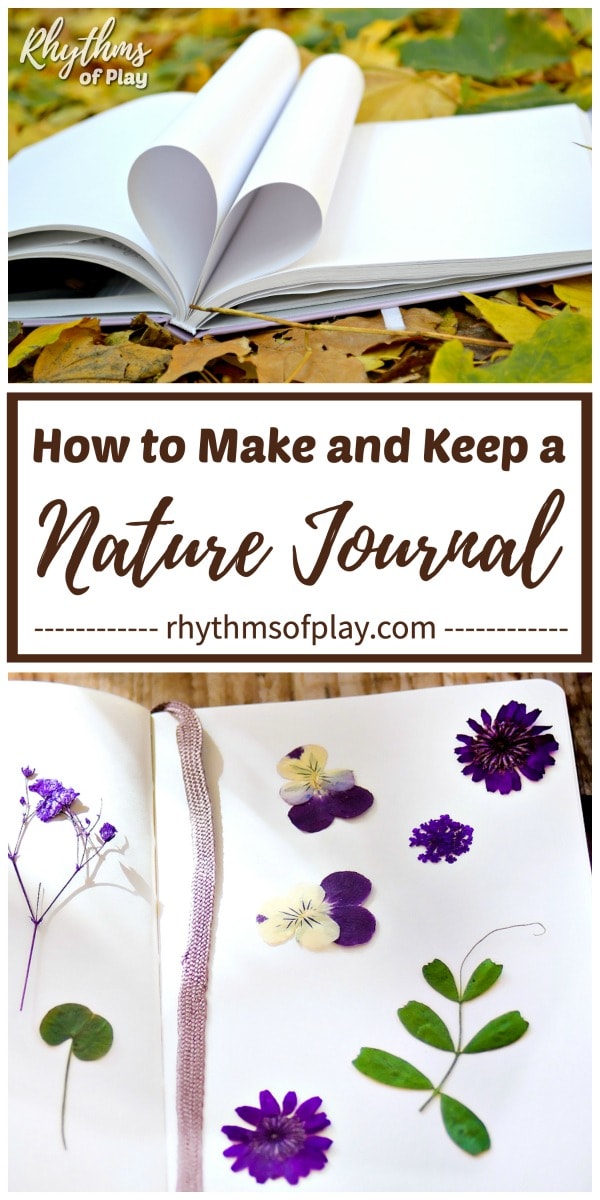
Related: Sorting and Classifying Rocks
What is a Nature Journal?
A nature journal or nature notebook is a personal record-keeping tool individuals use to document their observations, thoughts, and experiences related to the natural world. It serves as a combination of a diary, sketchbook, and scientific log, allowing people to connect with nature, engage in mindfulness, and deepen their understanding of the environment around them.
Nature journals are the perfect place to grow your thoughts, feelings, ideas, observations, and experiences with nature. And keeping a nature journal provides a rich opportunity for children and adults of all ages to study the natural world. Writing in a nature notebook also helps kids develop a deeper connection to and relationship with the earth.
“Nature always has secrets to share.”
~Nell Regan Kartychok. (Founder of Rhythms of Play)
A nature journal can be kept in various formats, including physical notebooks, digital documents, or even dedicated apps. Regardless of the format, the primary purpose of a nature journal is to create a space where you can record your interactions with nature, whether in your backyard, at a local park, on a hike in the wilderness, or during travels.
Nature notebooks are also an excellent place to record any nature study or outdoor learning activities you, or your children, complete each week. Whenever you head out on an adventure into the great outdoors, take your nature study journal to write, draw, or paint your observations, feelings, and experiences with nature and the wild.
Related: Caring for the Earth: 12 Ways to Help Kids Get It
What is Nature Study?
Learn more about Nature Study on our Nature Study Resource Page.
Related: 15 Reasons to Climb a Tree and Other Benefits of Risky Play
How to Make a Nature Journal
Making a nature study journal is a fun and easy activity for children preschool age and up at home or in the classroom. First, gather nature journal craft materials from the list below, and scroll down to follow the step-by-step directions to make your homemade nature journal.
Alternatively, you can scroll down to learn “How to Make a Nature Notebook” with the following tutorial. Or, buy a pre-made sketchbook or guided nature journal–have a look at the list of purchase options for children and adults toward the bottom of this post.
1. Gather nature journal craft supplies.
- Recycled cardboard (Large cereal and cracker boxes work great!)
- Lined binder paper (optional)
- Cardstock or super heavyweight cardstock (heavyweight paper is best for watercolor art and attaching nature specimens)
- Graph paper
- 3-hole-punch
- Loose-leaf binder rings, ribbon, jute twine, yarn, or anything else you can use to bind or tie a nature journal together
- Decorating supplies (optional) – crayons, colored pencils, markers, watercolor paints, nature stickers, contact paper, Mod Podge and fabric, etc.
2. Make a front and back cover for your homemade nature journal.
- Grab some cardboard from the recycle bin and cut two nine-by-twelve-inch pieces for the front and back cover of the Nature journal.
- We like to use recycled cardboard from cereal boxes because they are thin, light, flexible, and come in sizes big enough to make nature journals with regular paper.
3. Decorate the front and back cover or wrap it in contact paper or fabric (optional).
- Invite kids to use crayons, colored pencils, markers, watercolor paints, or stickers to decorate their homemade nature journals’ on the front and back covers.
- Another great way to cover a homemade journal is to wrap both pieces of cardboard in contact paper with a nature print.
- Or glue fabric with a nature print to the front and back cover decoupage style. If you’d like to try this method, follow the steps below:
- First, apply Mod Podge (or a slightly watered-down white glue) with a foam brush to both sides of each piece of cardboard for the front and back of the homemade nature journal.
- Next, wrap the fabric around both pieces, gently smooth out any bubbles and allow the front and back nature journal cover to dry.
- And finally, trim off any excess fabric once it is completely dry.
4. Punch holes in the front and back cover.
- Use a 3-hole paper punch to make holes along the long edge of the cardboard to complete the front and back cover for the journal.
5. Bind the nature journal and nature study supplies together.
- Place paper between the front and back cover of the journal. (We like to add lined binder paper, grid paper, and heavyweight cardstock (use a 3-hole punch), so we can write, create art, make bullet journal pages, and collect nature specimens such as flowers and leaves. But feel free to add the type and amount of paper you want to use in your homemade journal.)
- Use three loose-leaf binder rings. Or use ribbon, jute twine, or anything else you can use to bind or tie a homemade journal together.
- Slip the rings or twine through the three holes, and snap or tie to secure the front and back cover, paper, and other materials inside the nature journal.

Related: Nature-Inspired Sensory Discovery Bottles
How to Make a Nature Notebook
Another easier way to make a nature study journal is with a store-bought binder or notebook. All you need to do is add the type of paper and supplies you like to create nature journal entries and collect specimens. Follow the simple step-by-step directions below if you’d like to make a homemade nature notebook. Otherwise, scroll back up to make a DIY nature journal with the instructions above.
1. Gather nature notebook supplies.
Gather the notebook supplies you would like to use to make your nature notebook from the materials below.
- View 3-ring notebook binder (1-inch binder, 2-inch binder, or 3-inch binder)–Large binders have more room for pockets, pouches, and collecting nature specimens but are less portable.
- Binder paper
- Cardstock or extra thick heavyweight cardstock
- Graph paper (optional)
- 3-hole-punch
- Pocket dividers with holes, pouches, and notebook pockets with zippers (optional)
- Crayons, colored pencils, gel pens, markers, a portable watercolor paint pallet with a water brush, or nature stickers–you may also like THESE or THESE.
2. Fill your nature notebook with paper and nature journal supplies.
- Next, add the nature notebook supplies you want to put in your notebook:
- First, add lined binder paper to the nature notebook to write on.
- Then punch holes in a small stack of heavyweight cardstock with a three-hole punch and place it inside the binder.
- Next, put grid paper, botany paper (or heavyweight cardstock), etc., into the nature notebook.
- And finally, add pocket dividers with holes, pockets with zippers, and pouches for specimens and art supplies.
3. Create nature art for the notebook binder view window (Optional).
- Invite children from toddlers to preschoolers and kindergarteners to tweens and teens to decorate the front and back cover of their nature notebooks in any way they like, using the craft supplies from the list in step one.
- Or, decorate a sheet of paper with nature stickers for the front cover and spine of your nature notebook.
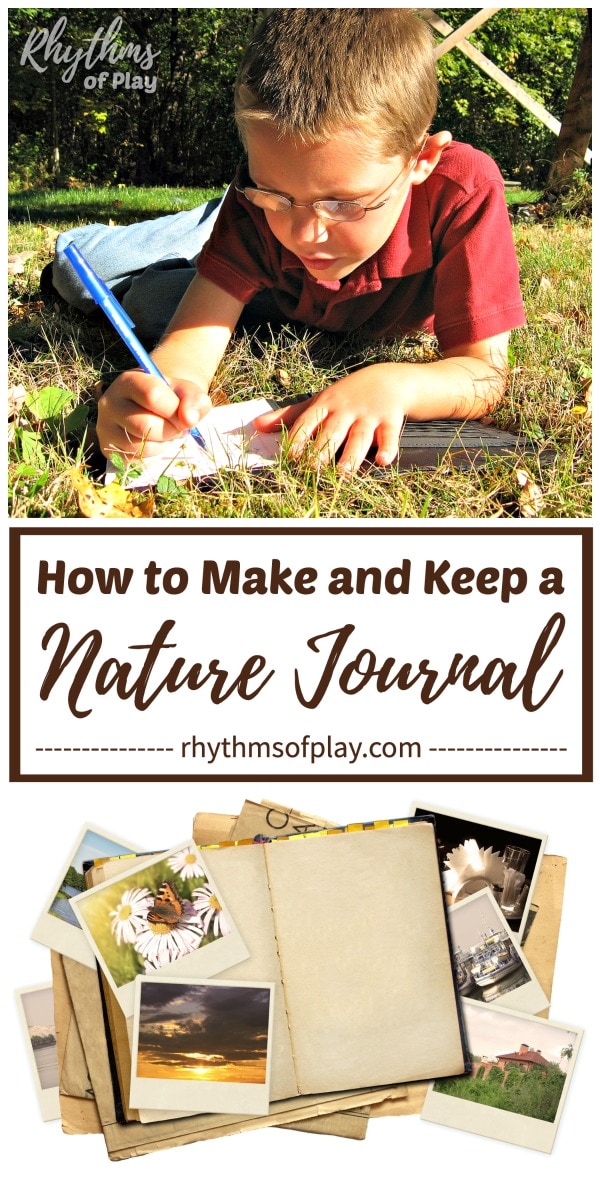
Related: Best Art Supplies for Kids
Other Notebooks, Sketch Books, and Pre-Made Options for Nature Journaling
I like to use a blank nature journal–a watercolor moleskin artist sketch pad that is small enough to throw in my purse (or a small hiking backpack) and is big enough for my creative ideas, thoughts, poems, and nature art. These mini craft paper notebooks also make great nature journals for kids and adults. And so does this gorgeous Tree of Life leather journal. A few more options are below.
Pre-Made Nature Journals for Kids You Can Buy
If you want to purchase a guided nature study journal for kids, look at the options below:
- A Kid’s Nature Journal
- Nature Journal For Little Explorers
- Hiking Journal For Kids
- A Nature Journal for Kids
- The Nature Journal for Kids
Related: Nature Memory Matching Game
How to Keep a Nature Journal or Notebook
“Nature always has secrets to share.” Take your nature notebook or journal with you whenever you head out into the great outdoors to record any observations you have in the wilderness and all your experiences with nature and her bounty. Mother Earth wants to share her abundance with you and your children.
Some people like to write about how they feel in nature, while others enjoy drawing or painting their rich experiences in the natural world. Record your observations and express your feelings using whatever medium speaks to you.
Add pictures, poetry, song lyrics, flowers, leaves, and other specimens from the natural world. Create a novel, an artistic masterpiece, or a scrapbook of varied mediums to make your nature journal reflect your experiences with nature.
What to include in a nature journal?
A Nature Journal is a wonderful way to connect with the natural world, document your observations, and foster a deeper appreciation for the environment around you. Here are a few things you might consider including in your Nature Journal:
Date and Location
- Always start with the date and the location where you’re making your observations.
- This helps you track changes over time and space.
Weather and Conditions
- Note the weather conditions, temperature, and any other relevant environmental factors that might influence what you observe.
Observations
- Document or describe in detail what you’re seeing, hearing, smelling, and feeling.
- This could include descriptions of plants, animals, insects, weather, landscapes, textures, sounds, and more.
Sketches and Drawings
- Include drawings, sketches, or paintings of what you’re observing. You don’t need to be an artist; these visual representations can help capture details that might be difficult to describe in words.
- Encourage children to choose something to write about, draw, or paint in their journals. Give them a few suggestions–a tree, flower, bird, or animal–or something else to focus on if they have trouble coming up with nature journal entry ideas.
- We love and highly recommend the Laws Guide Book to Nature Drawing and Journaling. And we recommend a few more nature journaling resources to help you and your children keep a journal at the bottom of this post.
Species Identification
- If you’re able to identify a plant, animal, or insect, note down its common and scientific names.
- You can also research these later with the field guides and resources on the list at the bottom of this post, or on this list of Nature Study Supplies if you need more clarification.
Behavior and Interactions
- Describe the behaviors and interactions you witness.
- For example, you might document how a bird feeds, how insects interact with flowers, or how animals communicate.
Personal Reflections
- Write down your thoughts, emotions, and reflections on what you’re observing.
- Consider how the experience makes you feel and any connections it sparks within you.
Questions and Curiosities
- Jot down any questions that arise during your observations. This can lead to further research and learning.
Collections
- Press flowers, leaves, feathers, or other interesting natural items into your journal.
- You can attach these with glue or use clear adhesive pockets to preserve them.
Quotes or Poems
- Include quotes, poems, or other bits of literature that resonate with your observations.
Photographs
- If you’re using a physical journal, you can print and paste photographs of what you’ve observed.
- Or, if you’re using a digital journal, you can directly include photos.
Comparisons
- Over time, compare observations from different seasons, years, or locations.
- This can help you understand the changes that occur in nature.
Environmental Notes
- Consider including information about conservation efforts, environmental challenges, or any news related to the natural world.
Mindfulness and Meditation
- Use your Nature Journal as a space to reflect on your mindfulness and meditation experiences in nature.
Maps and Diagrams
- If you’re exploring a specific area, consider sketching maps or diagrams to understand the landscape better.
Creative Writing
- Write short stories, poems, or descriptions inspired by your observations.
Field Notes
- If you’re exploring an area, make notes about the terrain, the path you took, and any unique landmarks.
Remember, there are no strict rules for what should be in a Nature Journal. It’s a personal reflection of your relationship with the natural world. Let your creativity flow and adapt your journal to your own interests and experiences. There are a few recommended items, nature journal printables, and other resources that you can include with your nature journal or notebook on the lists below.
Related: Nature Crafts and Art Ideas
Recommended Items to Include with your Nature Journal or Notebook:
Here are a few items that make studying nature even more fun! Look at the list of supplies for kids below, and check out our list of Nature Study Supplies for more fun ideas!
- Butterfly net and butterfly garden
- Critter cage or keeper
- Pencil boxes, small plastic bins with and without dividers, and sturdy notebook pouches for holding and carrying specimens and supplies
- And art supplies such as drawing pencils, crayons, colored pencils, and portable watercolor paints with a water brush. For more recommended art materials, look at the best art supplies for kids and why young artists should use them.
Nature Journal Page Templates & Resources:
- Printable Squirrel Behavior Tally Sheet | Rhythms of Play Learning Center.
- Bird Watching Printables | Rhythms of Play Learning Center
- What’s that Bird? Bug? Animal? | The Crafty Classroom.
- Leaf Collecting template | Kidzone.
- Nature Scavenger Hunt Printable Library | Rhythms of Play Learning Center
A Few Nature Journal Entry Prompt Ideas for Kids:
- Take your nature study journal whenever you head out on an adventure.
- Write, draw, and paint in your notebook or journal to record experiences with nature. Don’t forget to date entries!
- Write thoughts, feelings, ideas, observations, experiences, and relationships with the natural world.
- Encourage your child to choose something to focus on and draw or paint: a flower, a tree, a bug, a bird, etc.
- If your child is too young to write, you can let them draw and then write down what they tell you, but with no editing because it is their journal.
- Add poetry or quotes that are meaningful to you and related to your experience with nature.
- Place, trace, or press the nature specimens you collect inside of it.
- Download the free printable templates below for specific observations and nature journal activities.
Nature Journaling Tips for Preschoolers and Kindergarteners
Encourage children not yet reading and writing–toddlers, preschoolers, and kindergarteners–to use crayons or colored pencils to draw or doodle their feelings, experiences, observations, and interpretations of the natural world.
Or, invite them to paint what they see and observe with a portable watercolor pallet and watercolor brush. If children have trouble coming up with nature journal entry ideas, offer something to focus upon.
Next, ask toddlers and preschoolers about their experiences. Ask them questions about what they saw, felt, heard, sensed, etc., and write down what they tell you without editing what they say.
No right or wrong way to make or keep a nature journal exists. As parents and educators, it is important to value the authentic expressions of the children in our care. So encourage kids from preschoolers to teens to express themselves in whatever way comes naturally to them.
Children and adults also enjoy gluing nature specimens into their nature notebooks and collecting them in pockets, pouches, bins, and boxes. For example, kids love to press flowers in their nature journals and glue them to the pages, as shown in the photo below.
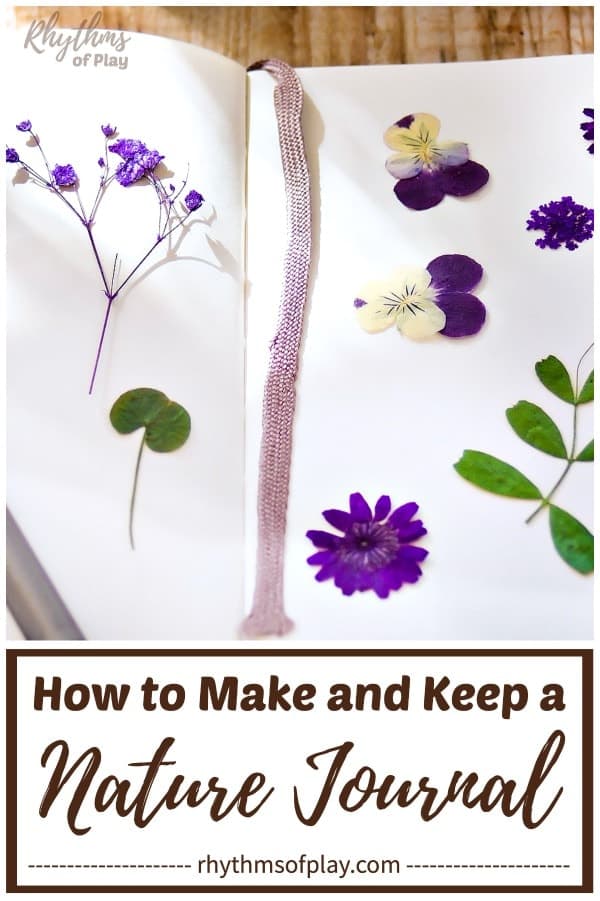
Related: The Best Nature Study Supplies for Kids
Recommended Reading for Keeping a Nature Journal
Below we have listed our favorite nature study and nature journaling guides and resource books that will help you keep a nature journal–and act as a springboard to your learning adventures in the great outdoors. Also, look at Nature Study Supplies for more of our favorite nature books and field guides for kids and adults!
- The Laws Guide to Nature Drawing and Journaling
- How to Teach Nature Journaling
- The Nature Handbook: A Guide to Observing the Great Outdoors
- Nature Anatomy
- The Curious Nature
- Keeping a Nature Journal
- Handbook of Nature Study – Anna Comstock’s Handbook of Nature Study is an essential tool for all budding naturalists. Today, there are NEW volumes available with color pictures:
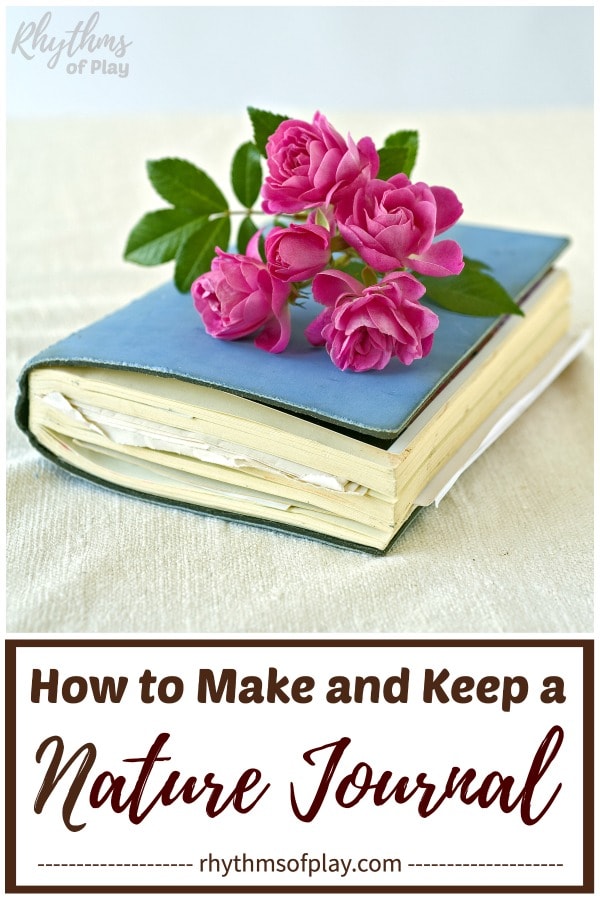
Nature Journal Resources for Kids and Adults
DIY Nature journals make it fun for kids and adults to study nature. Record observations, create art, and write learning experiences in the natural world. Start one today! For more information, please look at our Nature Study Resource Page.
You may also be interested in this fantastic collection of Outdoor Learning Ideas and Nature Study Supplies for kids. Learn more about Rhythms of Play HERE.
If You Liked How to Make a Nature Journal, You Might Also Enjoy
- Birding for Kids: Birdwatching Activities and Lessons
- The Art and Science of Skipping Stones
- Fun Facts and Ways to Learn about Squirrels
- The Best Rock Painting Ideas for Kids
- Rock Balancing Stone Stacking Art
- Flower Nature Crafts
- Nature Sensory Bottles
- Squirrel Facts and Activities for Kids
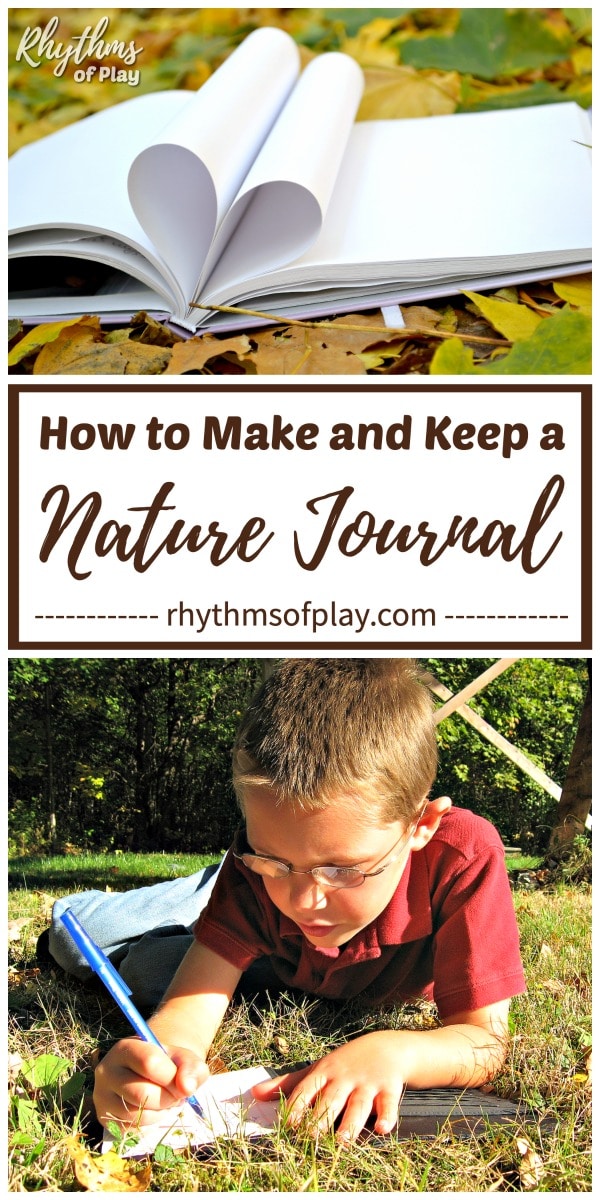

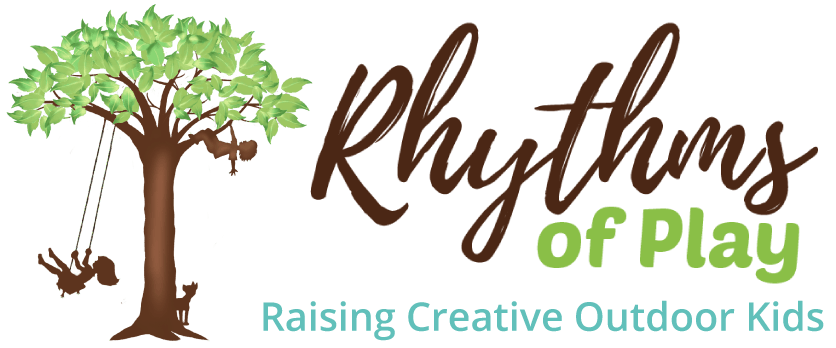
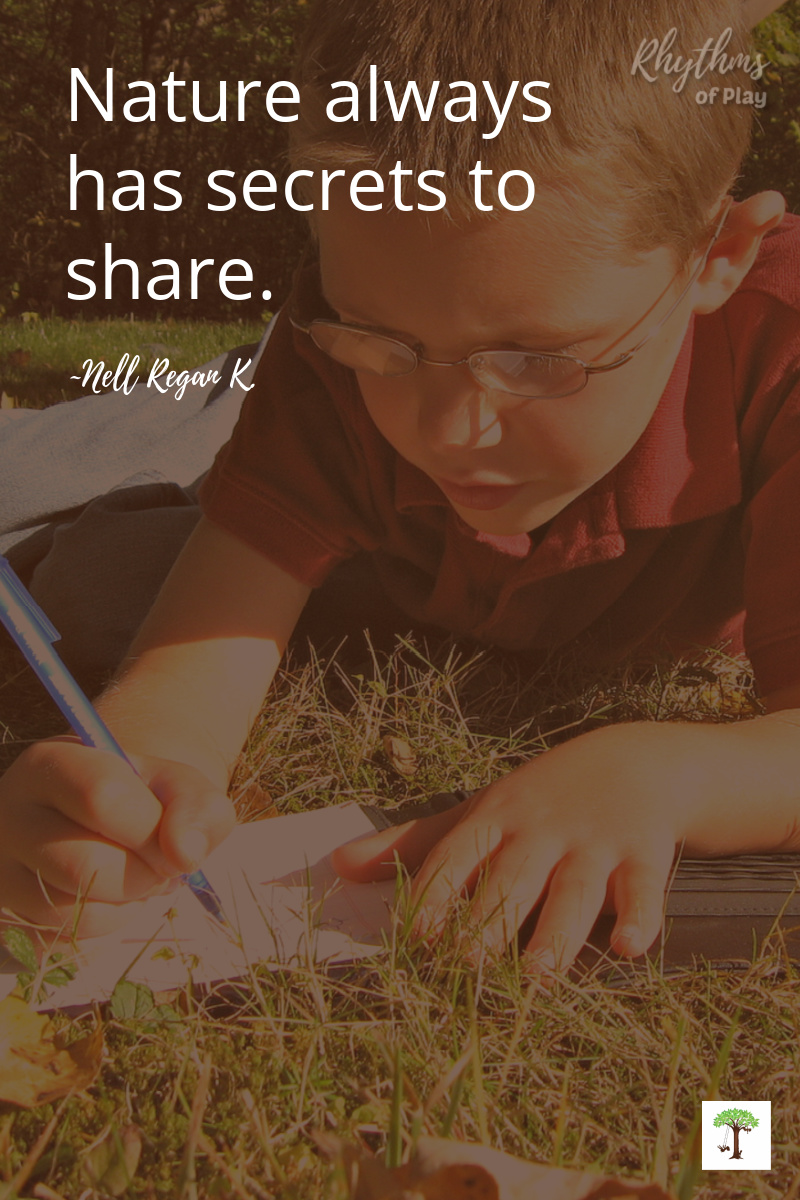

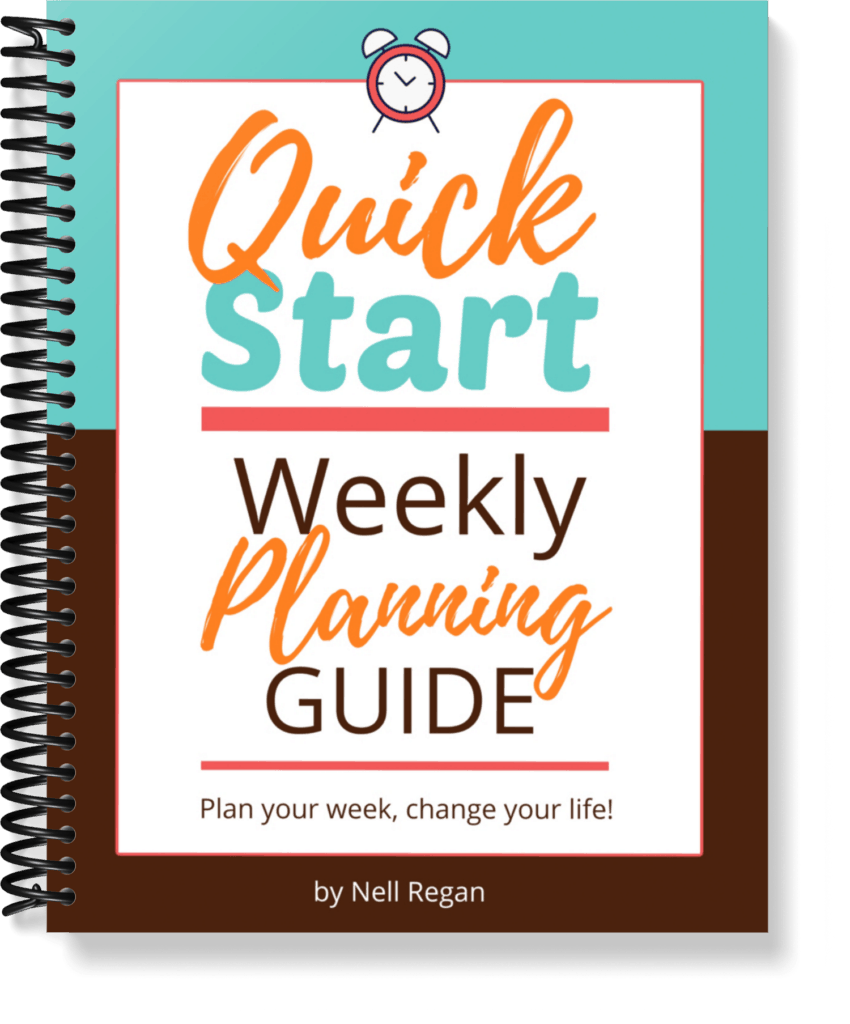
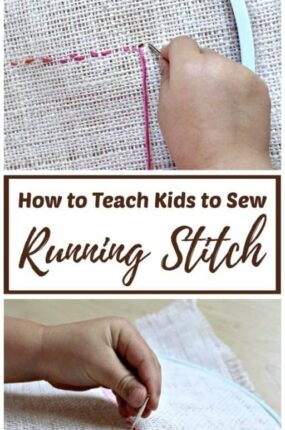

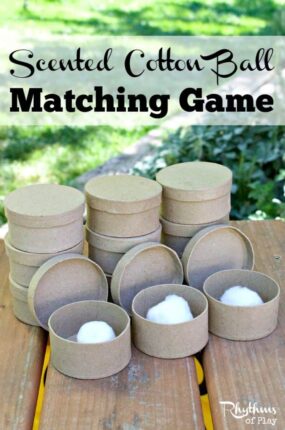
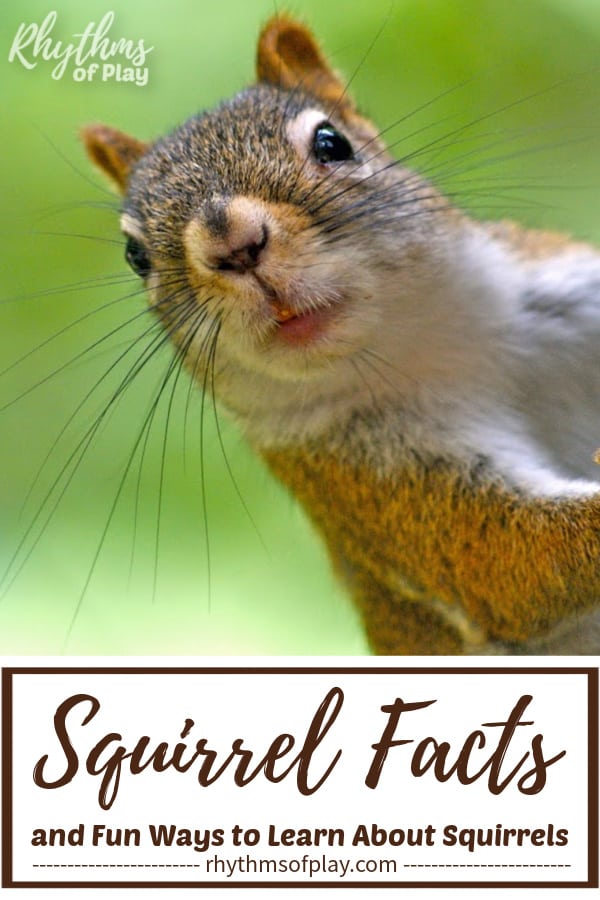
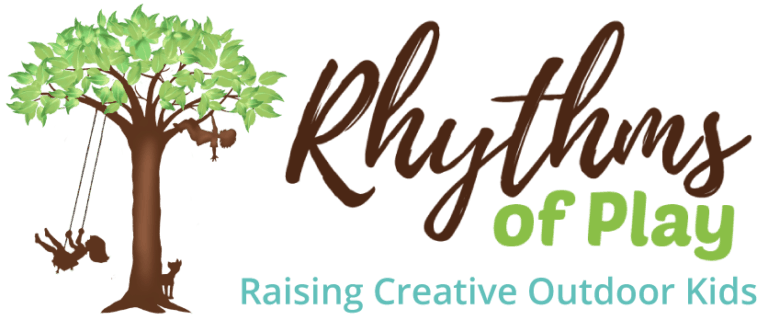
Thank you for providing so much valuable information about nature journaling. I can’t wait to make some with my kids and start recording our experiences.
Thank you, Charlene!
I’m so glad that you found this article useful. I hope you enjoy making and keeping a nature journal as much as we do!
I never knew that it was so easy to make a nature journal. Thank you for this informative post filled with great information about keeping a nature journal.
You are welcome Henrybow! I’m so glad that you found the information about making and keeping a nature notebook useful. Nature always has secrets to share. Enjoy!
Thanks for your post. Seeking accurate information is among the biggest
concerns for its younger generation.
Thanks, Mack! So glad you appreciate the value of how to make and keep a nature journal. 🙂